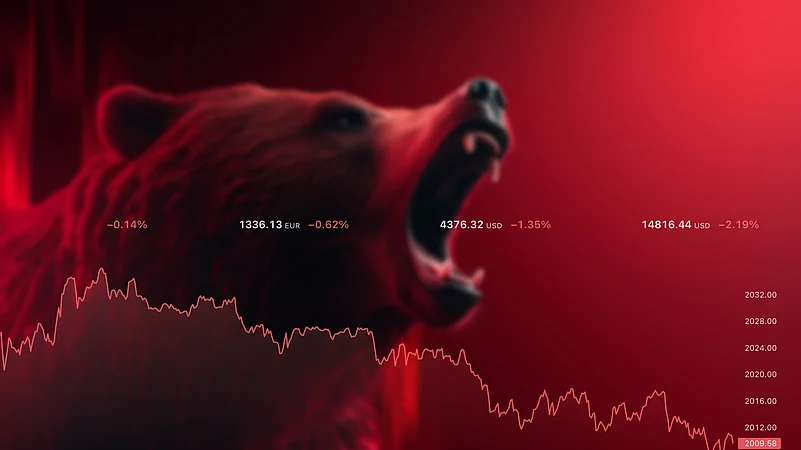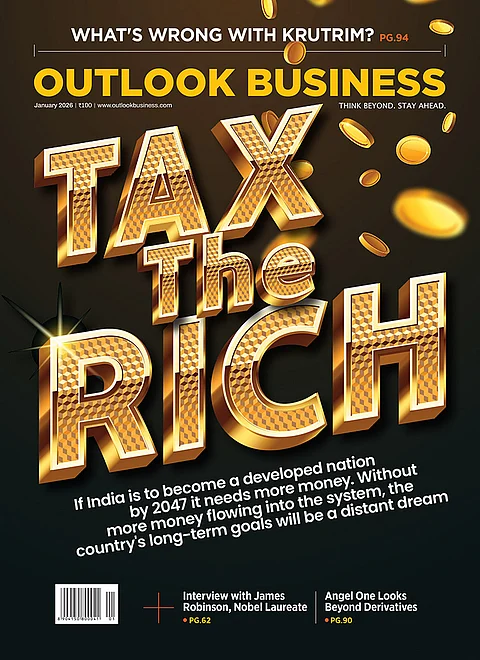Benchmark indices Sensex and Nifty tanked over 1 per cent on December 17, as investors remained cautious ahead of the US Federal Reserve’s interest rate decision on Wednesday. In addition, heavy selling in finance, metal, FMCG and IT stocks, along with weak global cues and a falling rupee, weighed on market sentiment.
Falling for the second consecutive day, the BSE Sensex tanked 1,064.12 or 1.30 per cent to close at 80,684.45. The NSE Nifty 50 settled at 332.25 or 1.35 per cent to close at 24,336. Sectoral indices including Nifty Bank, Nifty Metal, and Nifty Infra fell 1-1.5 per cent each.
"Widespread pessimism prevails across all sectors ahead of key policy decisions from the US Fed, BoJ (Bank of Japan), and BoE (Bank of England). While the market has already factored in a 25 bps cut from the US Fed, it remains vigilant for any hawkish signals. The BoJ and BoE are largely expected to maintain their current rates for the year,” said Vinod Nair, Head of Research at Geojit Financial Services.
Here are the key reasons behind today’s market crash:
US Federal Reserve Jitters
Investors remain cautious ahead of the US Federal Reserve’s monetary policy outcome on Wednesday, December 18. While the markets are expecting a 25 basis points (bps) rate cut from the Fed on Wednesday, investors will closely monitor Fed chair Jerome Powell’s commentary for guidance on the coming year.
“Globally markets will be looking forward to the FOMC outcome on Wednesday. Markets have already discounted a 25bp rate cut and, therefore, the focus will be on the Fed chief’s commentary. Any departure from a dovish commentary will be a negative from the market perspective. This is only a remote possibility,” said V K Vijayakumar, Chief Investment Strategist at Geojit Financial Services.
Rupee Hitting All-time Low
The Indian rupee slipped 1 paisa to a new all-time low of 84.92 against the US Dollar on December 17, pulled by foreign fund outflows and weak domestic equity markets.
On Tuesday, the rupee traded flat near 84.90 as markets remained focused on the FED's final policy decision, disappointing trade balance data and weak domestic markets.
Jateen Trivedi, VP Research Analyst - Commodity and Currency, LKP Securities says while a 0.25 bps rate cut has already been factored in, forward commentary and projections will be the key. A dovish tone could push the dollar index lower, providing relief for the rupee.
“However, any uncertain or hawkish remarks may strengthen the dollar and keep participants bearish on the rupee. The rupee's range is anticipated between 84.75 and 85.05,” he added.
Widening Trade Deficit
India’s trade deficit widened to an all-time high of $37.8 billion in November will put further pressure on the rupee pushing it towards 85 to the dollar.
“The sharp spike in India’s trade deficit to $37.8 billion in November will put pressure on the rupee pushing it towards 85 to the dollar. Exporters like IT and pharma will benefit from depreciating rupee and for importers the import cost will increase. This will have an impact on their stock prices," Vijayakumar said.
Lack of Fresh FII Buying
Lack of buying interest from Foreign Institutional Investors (FIIs) has added to the cautious market sentiment. FIIs sold equities worth Rs 279 crore on Monday.
“FII outflows persist due to rising US bond yields and a strengthening dollar, further contributing to the prevailing pessimism," Nair said.
Bank of Japan Policy Meet Raises Caution
The Bank of Japan (BOJ) will hold its final policy meeting of the year on December 18-19, where the board will decide on raising short-term interest rates from the current 0.25 per cent. The BOJ decision will come after the Fed’s outcome, which is likely to announce a quarter-point rate cut.
“We expect markets to consolidate within a broad range as sentiments remain cautious ahead of the US Fed and Bank of Japan’s interest rate decisions,” said Siddhartha Khemka, Head - Research, Wealth Management, Motilal Oswal Financial Services Ltd.
Market sentiment remains cautious due to global uncertainties, with investors awaiting key policy decisions and grappling with domestic challenges. The outlook hinges on the US Federal Reserve’s stance and other global central bank moves.



























